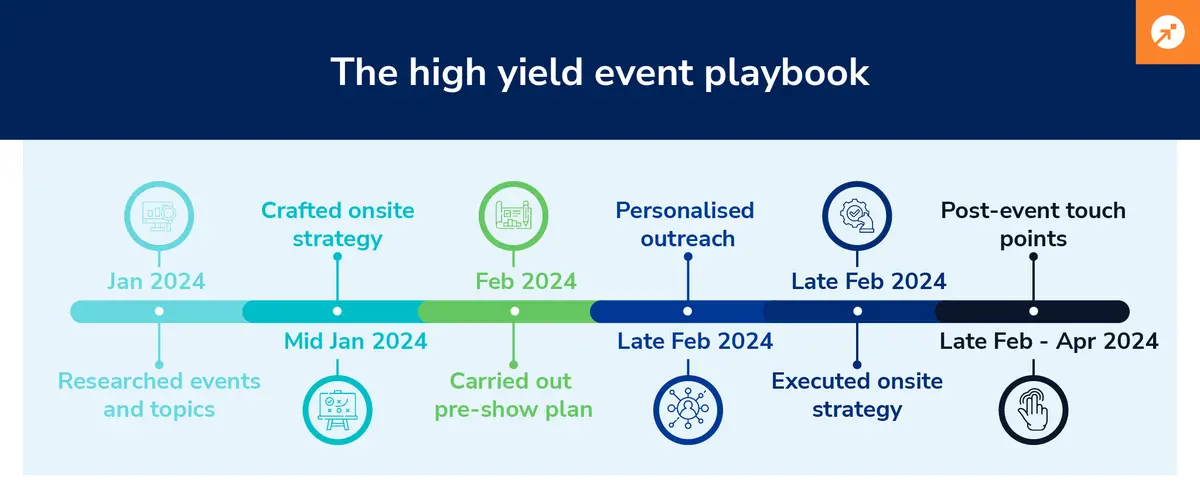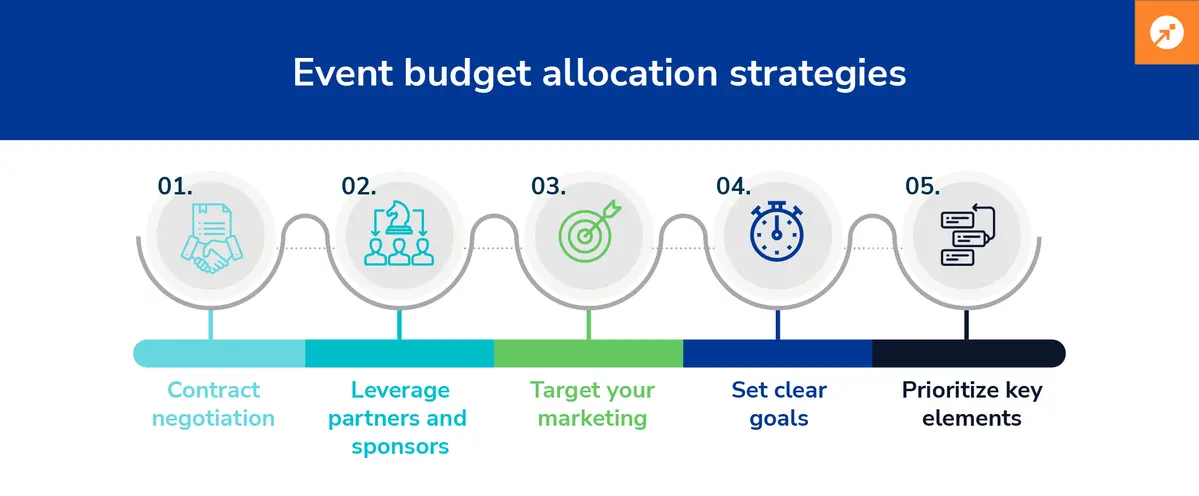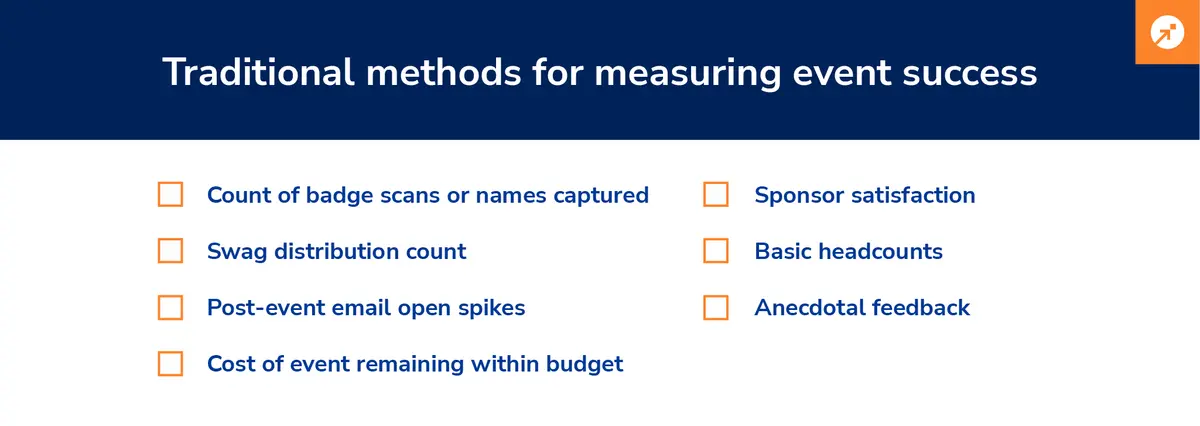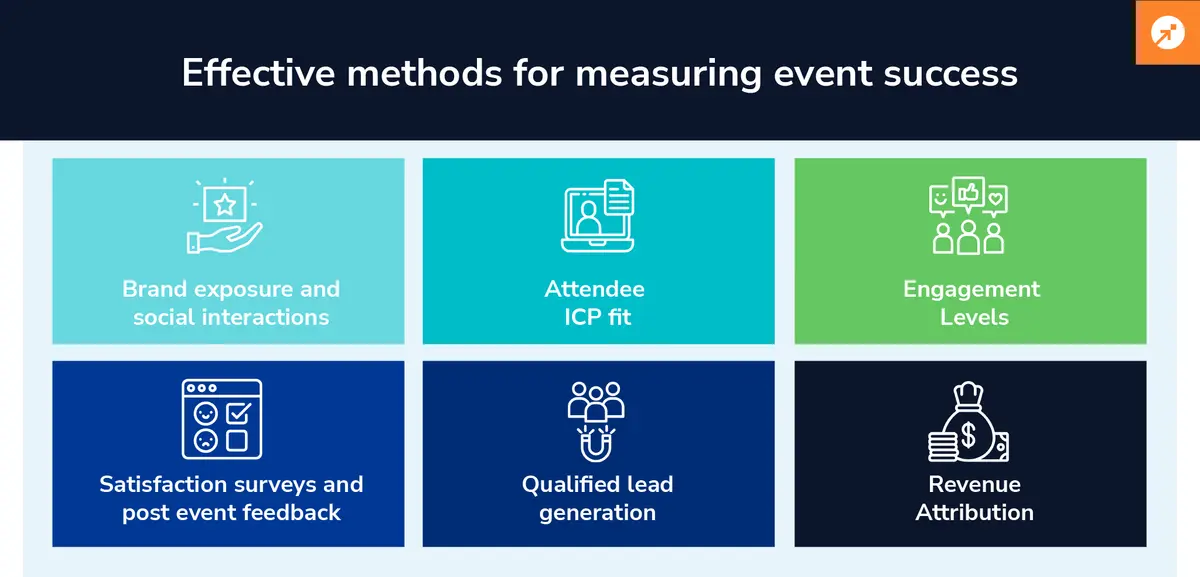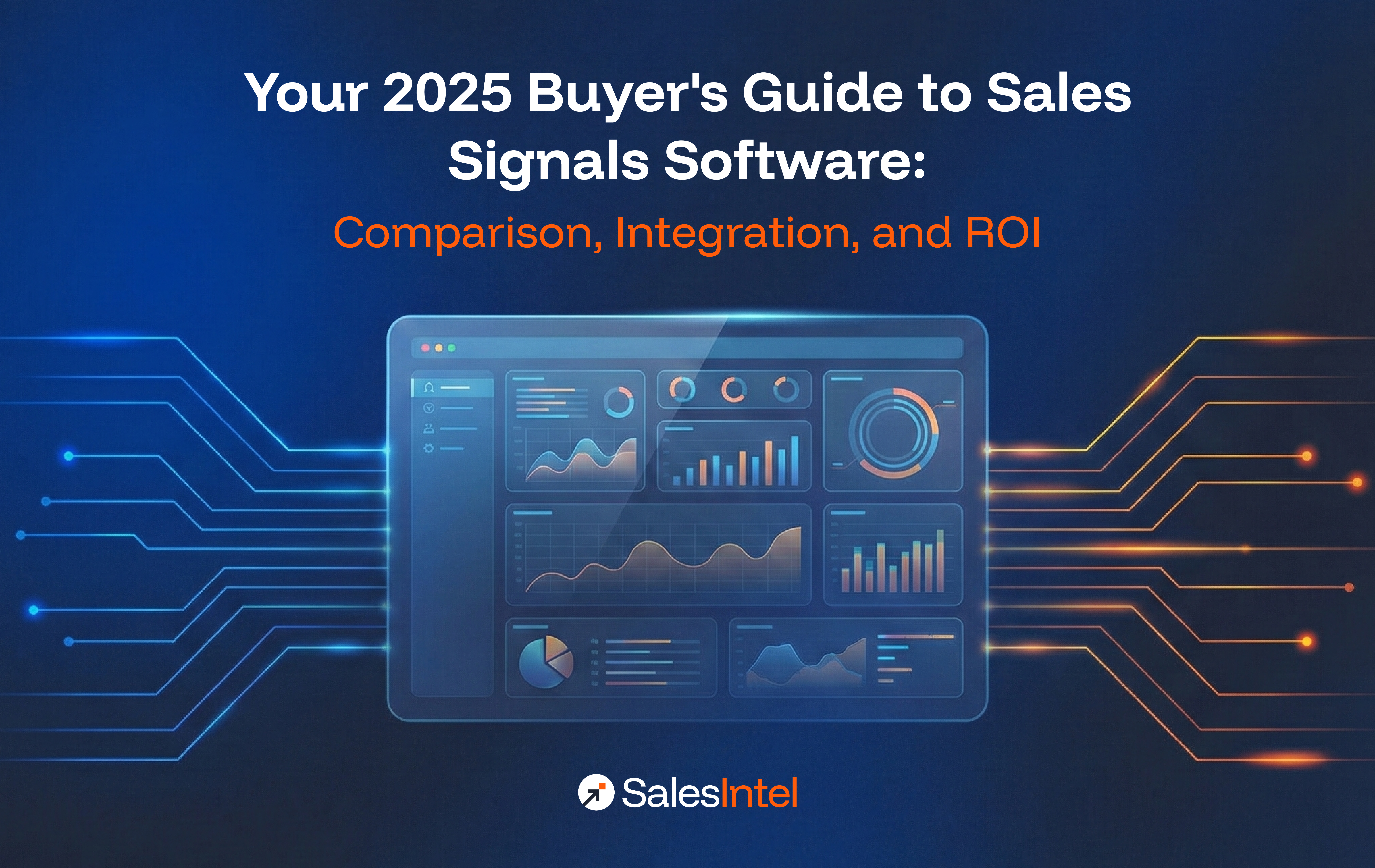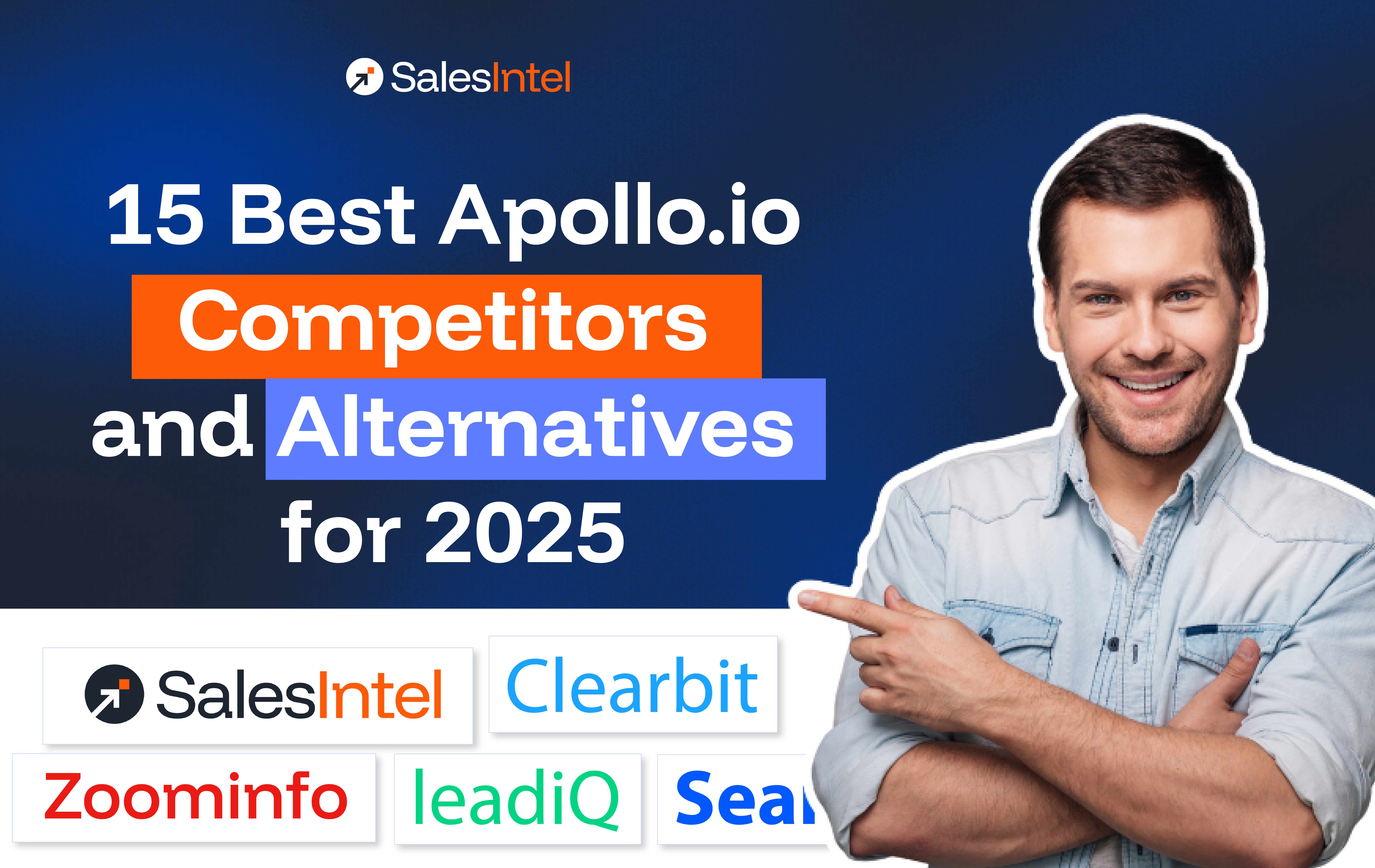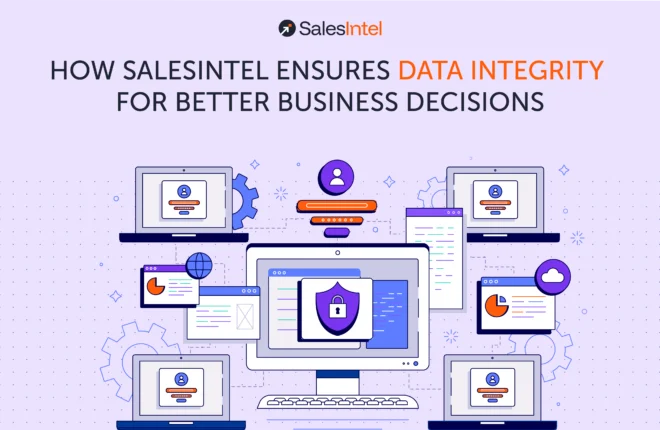As we gear up for the upcoming event season, you’ve likely noticed the B2B event landscape has changed.
Gone are the days of simply showing up at a conference booth and hoping for the best. Today’s successful event strategies require careful planning, data-driven decision-making, and a focus on quality over quantity. Moreover, with budgets scrutinized like never before, traditional methods of measuring event success, such as badge scans and headcounts, are no longer sufficient to justify the significant investments required.
If you’re a sales or marketing leader, you need a modern event playbook to ensure you’re driving the most value possible from your in-person events.
To that end, we’ve put together a 6-step event playbook you can follow to significantly enhance the return on investment (ROI) of your event attendance and hosting this year.
In this guide, we’ll also explore how to allocate budgets and measure the true success of your event initiatives. Whether you’re sponsoring major industry conferences or hosting intimate customer dinners, this playbook will help you transform your events from a cost center into a driver of scalable growth.
The Results
It may seem odd to lead with the results of running an event playbook, but we want to be as upfront as possible about the potential outcomes our team has seen by using this strategy and demonstrate what building a successful end-to-end experience can mean for your team as well.
Last year, Chelsea Madden, VP of Customer Success and Partnerships at SalesIntel leveraged the exact event playbook we’ve outlined here at Manifest, an in-person logistics-focused event, to generate 42 pre-event meetings and four net new deals resulting in a 180% ROI cost expenditure from closed deals with more still in the funnel – not bad if you ask us!
Now let’s talk about how she did it.
The 6-Step Playbook for High-Yield Events
1. Be Strategic with Event Selection
Before committing your time and resources to any event, thoroughly research its alignment with your ideal customer profile (ICP). Think about the other attendees – are there certain personas you want to connect with? Are the attendees likely to purchase a solution like yours? And so on.
If you already have access to an attendee list, great! If not, focus on finding a previous attendance list or a list of vendors, speakers, and sponsors from this year’s event.
Once you have your list, you can utilize a tool like SalesIntel to gather firmographic data on all companies associated with the event. You can also leverage intent data to uncover which of those companies were interested in solutions that we can solve.
The key is to look for events at which a significant percentage of participants match your target audience and show intent for the solutions you offer.
(For reference, in doing this exercise, we discovered out of close to 500 vendors, speakers, and sponsors, more than 25% of them had surged on a solution or an intent cluster related to our products, so it made sense for us to go.)
2. Gather Pre-Event Intelligence
Once you’ve selected an event and built your list of high-value target accounts, you can leverage SalesIntel’s robust supply of B2B contact information to create a targeted list of high-priority prospects that fit within your ICP and show buying intent for your solutions.
From this list, you can develop a “Pictionary Dictionary” with photos and key details about decision-makers you want to connect with on-site. This allows your team to easily identify and engage with the right people.
3. Conduct Pre-Event Outreach
Your pre-show communication should come directly from those from your company who will be attending the event. This could be as simple as an email asking for 15 minutes of their time to meet and have a cup of coffee, a drink, or to meet and get breakfast, lunch, or dinner, depending on the opportunity size.
Going further, you can utilize SalesIntel’s Research on Demand feature to gather the contact data of the entire buying committee within a target company and preemptively reach out via phone to set up meetings before the event. Of course, you can (and should) use intent signals to personalize these outreach touches based on the products or services in which your target companies are interested.
4. Execute your Onsite Plan
Once you’re at the event, all that pre-show work comes into play. Whether you have a booth, speaking slots, or are just attending the event, use your time wisely.
Rather than aiming for a high quantity of badge scans, prioritize having meaningful conversations with qualified prospects. Use the “Pictionary Dictionary” you’ve created to hone in on your high-value prospects and leverage intent data to understand exactly what these prospects are interested in. This is also a perfect opportunity to wow your prospects with the amount of research you’ve done on them to have an intelligent conversation about what they are looking for.
5. Stand Out from the Crowd
In a sea of drab suits and stifled business attire, think about ways to make your presence visually distinctive without being over the top.
We’re not necessarily talking about throwing on a bunny costume or waving around flashing lights on the tradeshow floor. Tastefully standing out from the crowd could be as simple as wearing coordinated, eye-catching outfits with your team that align with your brand colors.
(In our case, Chelsea wore vibrant-colored dresses on both days of the event to ensure she stood out against the black and white-clad crowd.)
6. Send Fast and Personalized Follow-Up
Nothing can spoil a great interaction with a prospect faster than for them to receive a painfully generic follow-up email a week after an event.
Generic follow-up shows a lack of effort and genuine interest in their business. Additionally, in the week it takes to send a follow-up, your prospect has had countless other things fighting for their time and attention, and they’ve likely forgotten some or all of your conversation. Don’t let this happen!
To start, you and your boots-on-the-ground team should constantly communicate with your SDRs and AEs, filling them in on who you’ve met with, who you have meetings booked with, and the prospects with whom they need to follow up immediately.
If you’ve set up a follow-up meeting with a prospect, great! You can assign that meeting to an AE. If not, task your SDRs with proactively engaging with prospects you’ve met to get meetings booked.
Finally, use the intelligence gathered before and during the event to tailor your follow-up messages and next steps for each prospect. This will all help ensure that when each prospect does receive a (timely) follow-up, it resonates with their needs and keeps them engaged.
Managing Event Budgets
A critical component of the modern event playbook is strategically allocating your budget for maximum impact. Simply throwing money at the biggest conferences isn’t enough. You need to be precise and purposeful with every dollar you spend. Including purchase protection for your event to safeguard your investment against unforeseen changes. This added protection ensures that any unexpected issues don’t disrupt your event’s financial stability, allowing your team to focus on strategic planning and engagement.
Negotiate your Event Contract
When negotiating event contracts, come prepared with a list of non-negotiables and “nice-to-haves.” Do you need a particular booth space in a high-traffic area? Do you have a set budget you need to stick to? Maybe you need to have at least one speaker for an event or a certain number of event passes for your sales team. Whatever your non-negotiables are, go into the negotiation knowing exactly what you need to invest.
Remember, event organizers are often willing to add value beyond the basic package for the same price. This could include prime booth locations, speaking opportunities, or additional marketing exposure. Don’t be afraid to negotiate!
Leverage Partnerships and Sponsors
Consider leveraging partners and sponsors to extend your budget. For larger events or your own customer conferences, bringing in sponsors can help offset costs while providing additional value to attendees and exposure to new audiences. However, when it comes to partners and sponsors, be selective. Ensure these partnerships are mutually beneficial and align with your event goals.
Target Your Marketing
When it comes to marketing your event, traditional spray-and-pray tactics often fall flat. Rather than broad, expensive campaigns, focus your budget on reaching out to companies showing active interest in your solutions or the event itself.
To do this, you can utilize intent data signals to identify companies that are actively searching for what your event is about, the content that you’re going to be presenting, the conference name, your company, etc., and focus your time and budget reaching out to those customers.
Remember, the goal isn’t necessarily to minimize costs but to maximize the return on every dollar spent. By approaching your event budget strategically, you can transform event participation from a costly marketing expense into a powerful driver of business growth.
Set Clear Goals
Without a set of well-defined goals, it’s impossible to measure success or guide your team’s efforts effectively.
Set ambitious yet attainable goals that are measurable and quantifiable over the short and long term. These can be anything as long as they align with your overall business objectives.
For example, you could say “We want to generate 50 qualified leads from companies with over $50 million in annual revenue” or “We will schedule 15 product demos with decision-makers in the manufacturing sector within three weeks of the event.”
Setting clear, actionable goals will provide your team with a roadmap for success. These objectives will guide your strategies before, during, and after the event, ensuring that every interaction and activity contributes to your overall objective.
Prioritize Key Experiential Elements
Whether it’s an attendee, a speaker, or a sponsor, their experience at your event is critical to their overall satisfaction. These people are spending their time and money to be at your event, so how are you making sure that both the attendees and sponsors feel like this event was worthwhile?
Are eventgoers and sponsors having a good time? Are they relationship-building? Are you forming strong bonds with potential buyers that you can leverage down the line?
From insightful presentations and workshops to facilitating meaningful networking opportunities, or providing hands-on product demonstrations, prioritize specific event elements that will leave a lasting positive impression on your target audience.
Measuring True Event ROI
When evaluating the success of your event, the path to ROI is not always clear.
Traditional event metrics like badge scans or swag distribution counts only provide topline insights into the sheer number of interactions (or the number of people who simply wanted a free shirt). Unfortunately, while these vanity metrics may make for a great post-show slide deck, they often fall short of capturing the true value and impact of event participation and fail to correlate directly with tangible business outcomes or long-term goals.
However, the true measure of event success often extends well beyond the event itself – taking into account the relationships built, the pipeline influenced, and the deals eventually closed as a result of those initial event interactions.
Instead, focus on more meaningful metrics that align with your broader organizational objectives:
- Brand Exposure and Social Interactions: Track increases in social media followers, engagement rates, and brand mentions related to the event. This provides a more nuanced and honest view of brand impact than simple headcounts.
- Attendee ICP Fit: Just as you did before the event, assess how well the event attendees you engaged with actually aligned with your ICP. This will provide insight into how effective you were at reaching the right people at the event, but also the event persona makeup as a whole.
- Engagement Levels: Evaluate the depth and quality of conversations had at the event. Of course, the total number of people you talk to matters, but the quality of those conversations is key.
- Satisfaction Surveys and Post-Event Feedback: Gather and analyze feedback from attendees, partners, and sponsors. This goes beyond simple anecdotal comments to structured surveys that can provide quantifiable data on event satisfaction, areas for improvement, and the perceived value of different event elements.
- Qualified Lead Generation: Focus on the quality of leads generated rather than quantity. Track how many leads meet your specific criteria for a qualified sales prospect. It also wouldn’t hurt to measure response rates to follow-up communications and the number of meetings or demos scheduled due to event interactions.
- Revenue Attribution: Monitor the pipeline and closed deals that can be directly attributed to event interactions. This may require tracking over a longer period as sales cycles can extend for months, but it will provide a much clearer picture of the real value an event delivers over time.
By shifting focus to these more strategic metrics, you can gain a clearer picture of your event ROI and make more informed decisions about future event investments.
Embracing The Virtual (or Hybrid) Frontier
While the focus of this article has primarily been in-person events, the rise of virtual and hybrid events cannot be ignored. While in-person events have seen a strong rebound since the pandemic dip, many professionals have embraced virtual events with experts predicting that 45% of future B2B events will be completely virtual. Fortunately, many of the strategies used for in-person events can be adapted and applied to fully virtual events or hybrid models that combine in-person and online components.
For example, you should still aim to bring in attendees from personas within your ICPs, send pre-event outreach, and build personalized follow-up actions. You should also prioritize creating engaging, unique, and valuable experiences for attendees just as you would for an in-person event.
Elevating Your Event Strategy
Finding success in modern B2B events goes far beyond simply showing up with a booth and a stack of business cards. Instead, it requires careful planning and precise execution to bring in the right audience and make every interaction count. Whether you’re planning for in-person conferences, virtual gatherings, or hybrid experiences, the principles remain the same: find your audience, engage authentically, and measure what truly matters to your business. By leveraging the playbook we’ve outlined in this article, you’ll be able to transform your events from a cost center into a strategic driver of business growth and customer relationships.
Book a demo today to learn how SalesIntel can revolutionize your approach to B2B events!


